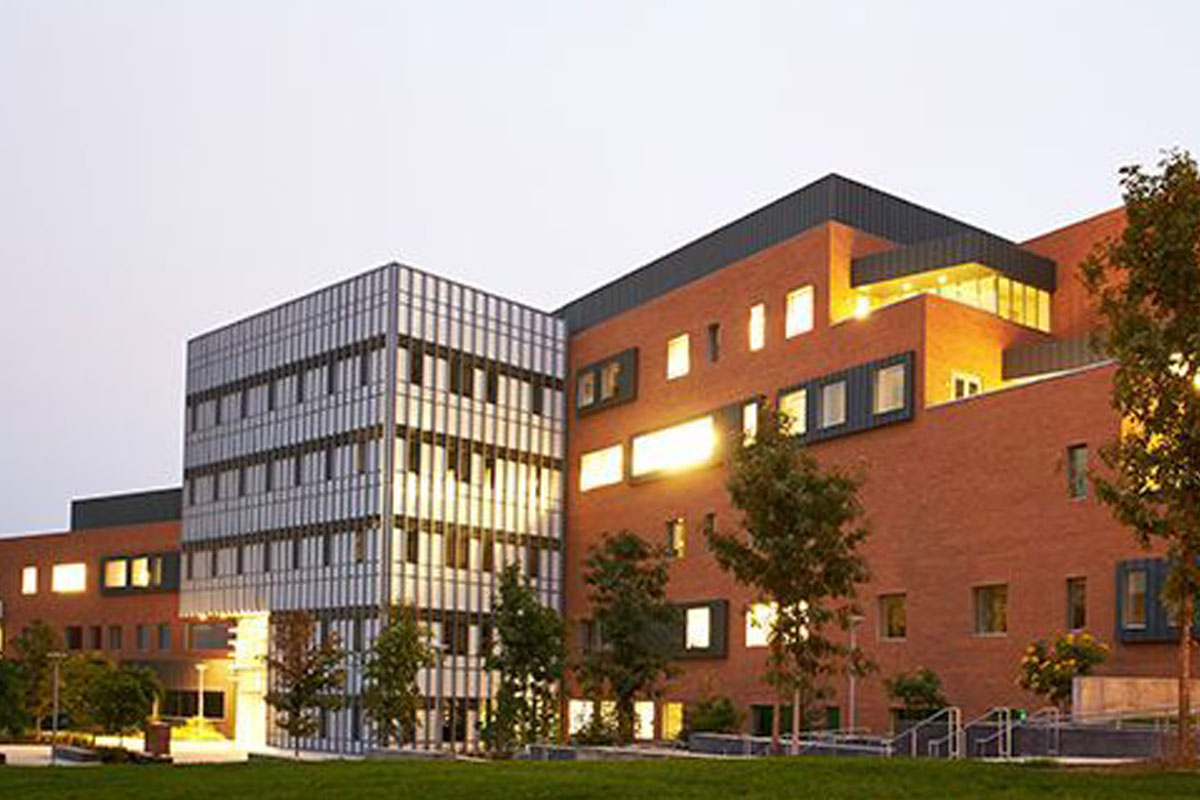Energy Efficiency
Energy efficiency and demand response continue to be at the top of California’s energy “loading order” for statewide planning. By continuing to reduce consumption, especially at times of pressure on the state utility grid, California avoids the need to build new power plants or operate existing plants with the highest carbon emissions. Energy conservation efforts have reduced campus energy use intensity (EUI) – total annual electricity and natural gas use per square foot of building space – by 22% from 2002 levels.

LED Lighting
Building on the campus-wide LED streetlight retrofit completed in 2016, Cal Poly is replacing exterior lighting on nearly all buildings in the campus core with LED, reducing energy consumption by nearly 50 percent while improving light quality and safety. Mott Gymnasium received an LED upgrade that reduced energy use significantly while bringing light levels up to NCAA standards for televised games and creating an amazing fan experience. The University Union underwent a building-wide LED lighting redesign that transformed the look of one of the busiest locations on campus.
Variable Frequency Drives
Variable frequency drives (VFD’s) are an effective way to not only save energy, but improve operation of pump- and fan -based heating and cooling systems, and while extending the life of equipment. Cal Poly has already retrofit the cooling systems of all 23 buildings served by the central plant with this technology, reducing pump energy use by over 60%. With $800,000 in funding from the Chancellor’s Office, athe first phase of a similar project is now underway to do the same for all building heating systems served by the central boiler plant.
Energy Information System
With the adoption of “big data” computing analytics through its new Energy Information System, Cal Poly is deploying automated fault detection and diagnostics to work toward continuous commissioning and optimization of central plants and building HVAC systems. The first phase of this project is focusing the technology on some of Cal Poly’s biggest energy users—lab buildings the central boiler and chiller plant, and other aging HVAC infrastructure. The SkySpark based EcoVox software solution that came out on top of a CSU system-wide solicitation was developed by Cal Poly Mechanical Engineering graduates and is being deployed on 18 of the 23 CSU campuses.
Through a new partnership with Amazon Web Services, Cal Poly is moving its aging data center to the cloud to take advantage of state-of-the-art computing horsepower and cyber security, while significantly reducing the energy and environmental footprint of a critical business and academic function. The partnership also created the Cal Poly Digital Transformation Hub—the world’s first university-based cloud innovation center to accelerate digital transformation in government, education, and nonprofit sectors.
Summer Electrical Demand Response

During periods of unusually high temperatures, the state's electrical grid can run short of supply. When this happens, the California Independent System Operator (Cal ISO) calls utility operators to increase supply by firing up less efficient and higher polluting "peaking plants", while at the same time activating statewide utility demand response programs to reduce consumption. Unfortunately, utility incentives for such programs have been reduceddropped significantly in recent years, and shutting down non-critical air conditioning and ventilation systems during such times negatively impact building occupants.
Instead, Cal Poly constructed a chilled water thermal energy storage (TES) system in 2011, which allows central plant chillers to run at night when electricity is cheaper, storing the chilled water generated in an insulated 1,600,000 gallon tank. During the day when cooling is needed, this chilled water is pumped to the buildings without having to runoperate the chillers. This strategy shifted approximately 1 megawatt of electrical load out of the peak period – far more than could be accomplished by other load reductions. Cal Poly is also developing a megawatt scale battery storage system to reduce Cal Poly’s peak usage, and shift some load to cheaper off-peak periods.
When Cal Poly is called to curtail load, building occupants are requested to voluntarily reduce their electrical consumption. Campus Building Coordinators are responsible to make sure their department has a plan in place when Cal Poly activates its demand response program. Department plans should identify concrete actions to be taken, and responsible persons assigned. Facilities Management and Development recommends the following:
- Turn off unnecessary lights
- Shut down non-critical computing equipment including printers, copiers, scanners, etc.
- Shut down non-critical lab equipment
- Raise thermostat settings by 3-5 degrees in areas that still have air conditioning
- For current status of the California electrical grid, click here.
The state’s electrical grid must develop significantly more energy storage infrastructure to balance intermittent solar and wind energy generation with demand.
